To have a good kitchen, the space must be at least 5 feet broad and 8 feet long. The Standard kitchen size is 8 feet by 10 feet. Kitchen countertops typically range in height from 32 to 35 inches in India
- What Are the Key Factors Considered in the Standard Kitchen Measurements and Dimensions?
- What Is Golden Triangle Rule?
- What Are the Standard Kitchen Measurements and Dimensions?
We have come a long way from making food in chulhas to when the gas is continuously delivered to us via a gas pipe.
A kitchen is an essential room in any house, where meals are prepared and cooked, and family and friends gather to socialise. A well-designed kitchen is functional, efficient, and comfortable.
As times have progressed, the roles and responsibilities of both gender have exchanged their fair share of each other.
As people start moving more towards progress, there is no time or mental capacity for individuals handling each other’s responsibilities to search for a balance that got misplaced somewhere by someone else; what could be a result of this is chaos and frustration.

Modular kitchens have always been adorned as the holy grail of peak efficiency, aesthetics, and functionality among people looking to have a well-organised home.
Don’t be surprised when we tell you that it is no mistake that you find it very easy to manoeuvre around in a modular kitchen, even on the busiest of the day, over the years and after countless amounts of research and development.
The Engineers and designers of the kitchen have come to make kitchen standard dimensions which can be leveraged to make an exceptional kitchen experience.
If you are considering making your kitchen ergonomic and efficient by making it modular, do take into account the modular kitchen dimensions, as kitchen measurements play a pivotal role in designing various kitchen modules and their placements.
There are certain factors to consider when designing a kitchen, including the layout, appliances, storage, and more. An important consideration is the size of the kitchen. Kitchen size affects both the functionality and aesthetics of the space.
Let’s look at the standard kitchen dimensions of various kitchen modules prevalent across India.
What Are the Key Factors Considered in the Standard Kitchen Measurements and Dimensions?
Several key factors need to be considered when determining standard kitchen size, measurements, and dimensions. These include:
- The number of people who will use the space regularly
- The amount of storage required
- The type of appliances being used
- The layout of the room
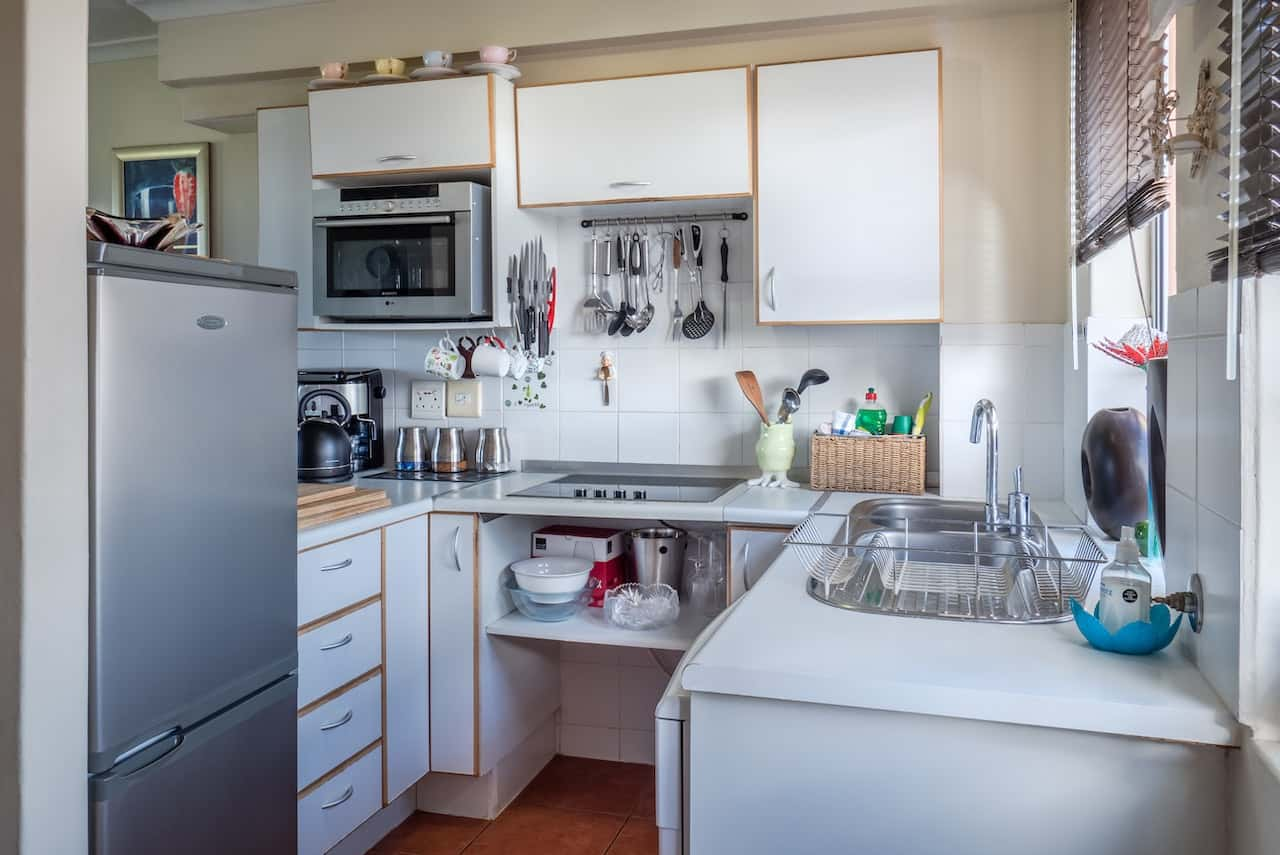
While designing the space required for a kitchen, one of the most important considerations that have to be made is the space required for two people to work without any constraints side by side.
Standard kitchen size is derived from these factors as they affect the kitchen experience.
An important rule that governs how a modular kitchen is designed is called the golden triangle rule. Let’s understand what it means.
What Is Golden Triangle Rule?
This rule states that there should be an imaginary triangle between your refrigerator, stove & sink for your food preparation and cooking convenience; this ensures your movement within your cooking area is smooth and time effective.
This is also an important consideration that is factored in when we are talking about standard kitchen sizes.
What Are the Standard Kitchen Measurements and Dimensions?
The kitchen standard size varies depending on the country or region. In India, for example, the average standard measurement for a small kitchen is 200 square feet (18 square meters).
For a medium-sized kitchen, it is 300 square feet (27 square meters), and for a large kitchen, it is 400 square feet (37 square meters).
In addition to overall size, other important dimensions to consider include countertop height, cabinet depth, fridge width, oven width/height/depth, sink width/depth/height, and cooktop width/height.
Dimensions for Countertop and Sink
The standard height of the kitchen platform and sink will vary depending on the size of the kitchen.
A small kitchen may only have room for a single sink, while a larger kitchen may have space for multiple sinks or an oversized island with a sink. The countertop should be large enough to accommodate all the appliances and prep space needed, leaving enough room for everyone to move comfortably.
Similarly, the kitchen platform height should be high enough for both tall and short-sized people to interact with the counter easily.
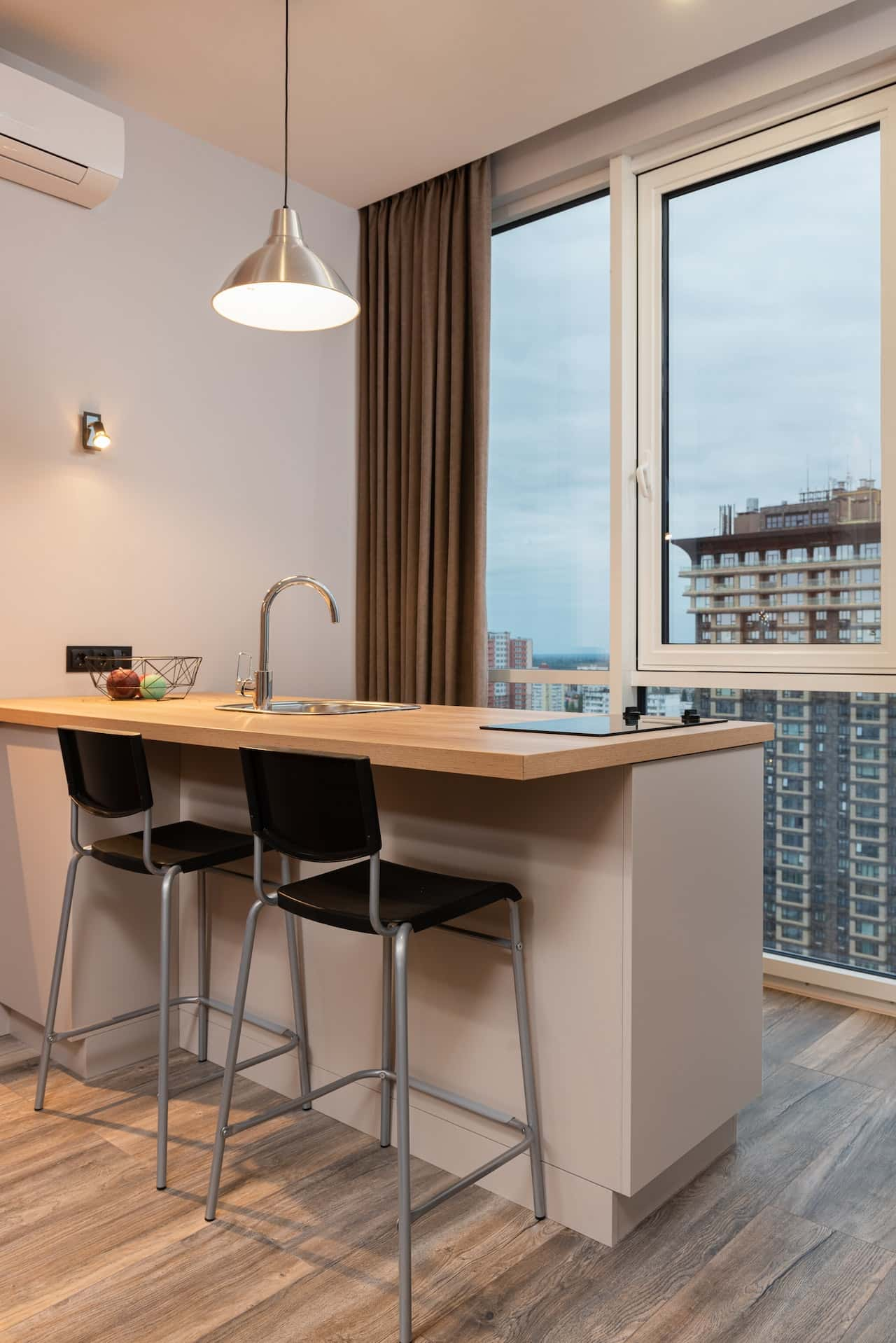
While considering the average height of Indians, which is assumed to be between 5.5-6.0 feet, we come to an average standard size of kitchen platform that could be about 24 inches or 2 inches, which is just the right amount of space for having a pleasant cooking experience.
The desirable kitchen counter dimensions are about 34 inches, which gives the counter a good amount of space to move around and still has sections left over for keeping the cooking ingredients handy.
The standard depth of the countertop is about 23 inches.
Since the countertop of the kitchen is the most frequented when it comes to interacting with kitchen activities aligning the measurements to the standard kitchen size would make the activities that get carried around the countertop would be more enjoyable.
Dimensions for Wall Cabinets
Wall cabinets are an important part of any kitchen design. They provide storage space for dishes, cookware, food items and a place to display decorative items.
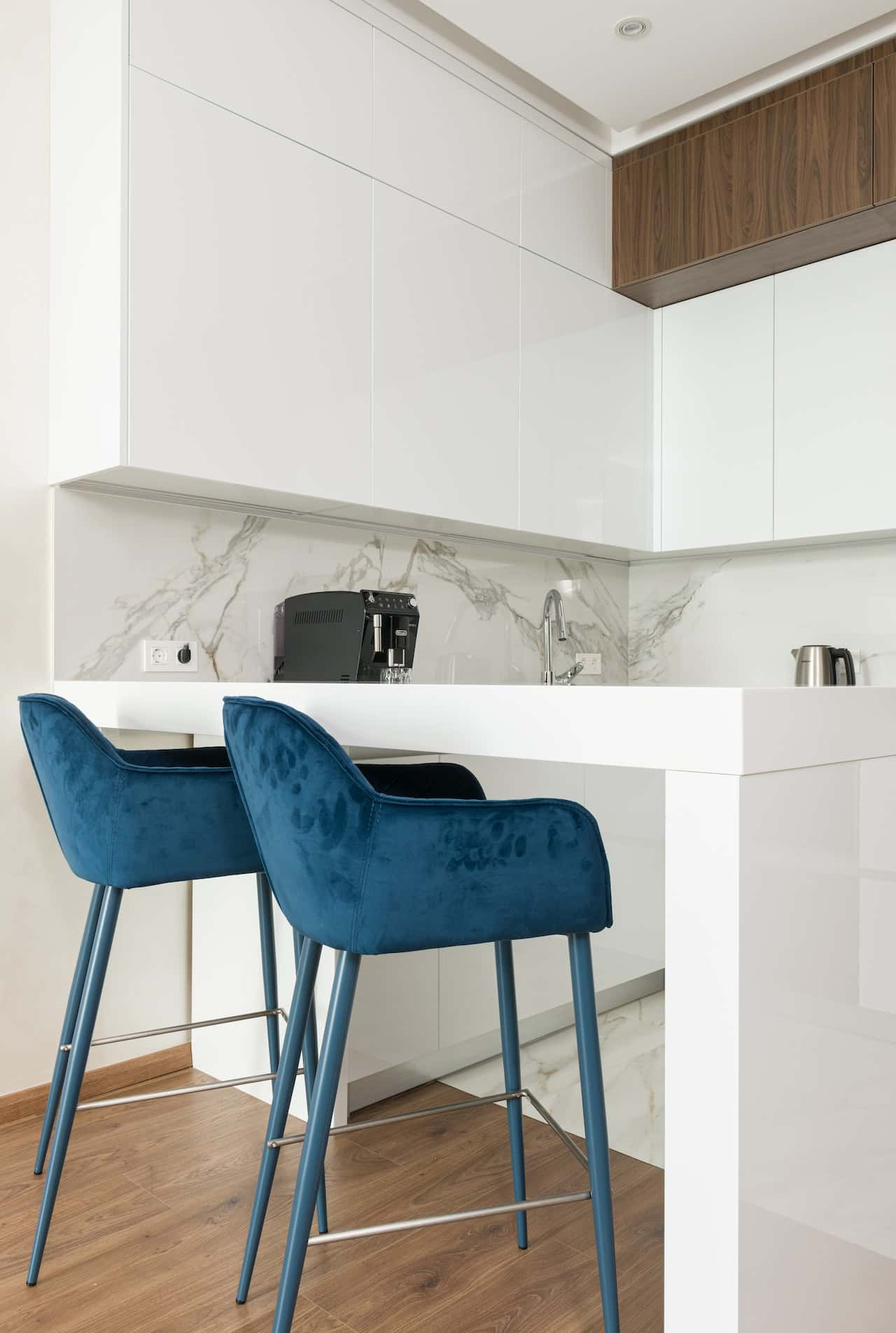
Wall cabinets come in different sizes; however, if we were to fit this in the standard kitchen size framework, most would be around 30 inches wide and 12 inches deep.
Some wall cabinets are taller than others, so measure the height of the area where they will be installed before choosing a cabinet style.
Dimensions for Base Cabinets
Base cabinets are another essential element of any kitchen design. They provide storage and workspace for preparing meals and housing appliances like ovens and dishwashers.
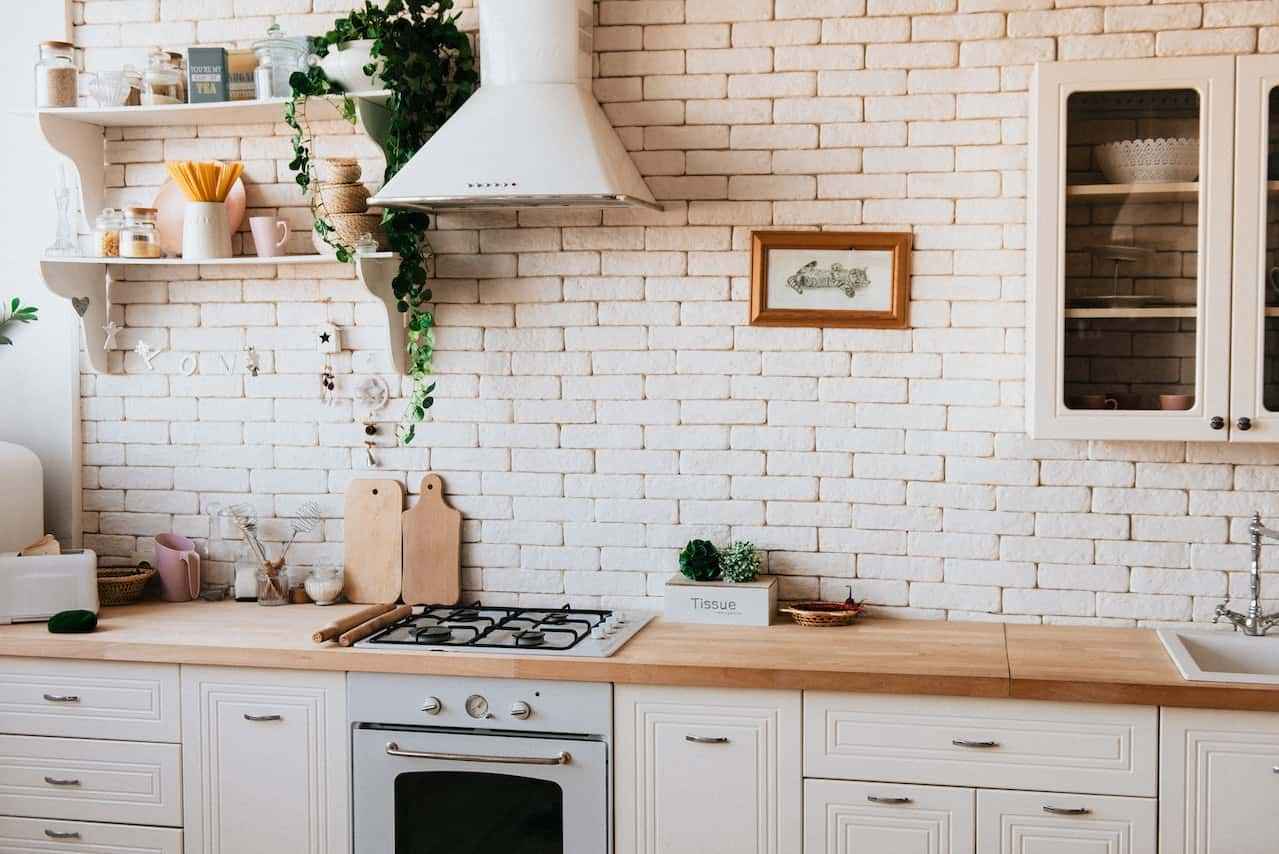
Base cabinets come in different sizes, but most of the standard kitchen size base cabinets are 36 inches wide and 24 inches deep. As with wall cabinets, the height of base cabinets can vary, so measure the installation area before choosing a style.
Dimensions for Kitchen Island
A kitchen island provides extra prep space, storage, and seating and can even house Appliances like microwaves or wine refrigerators.
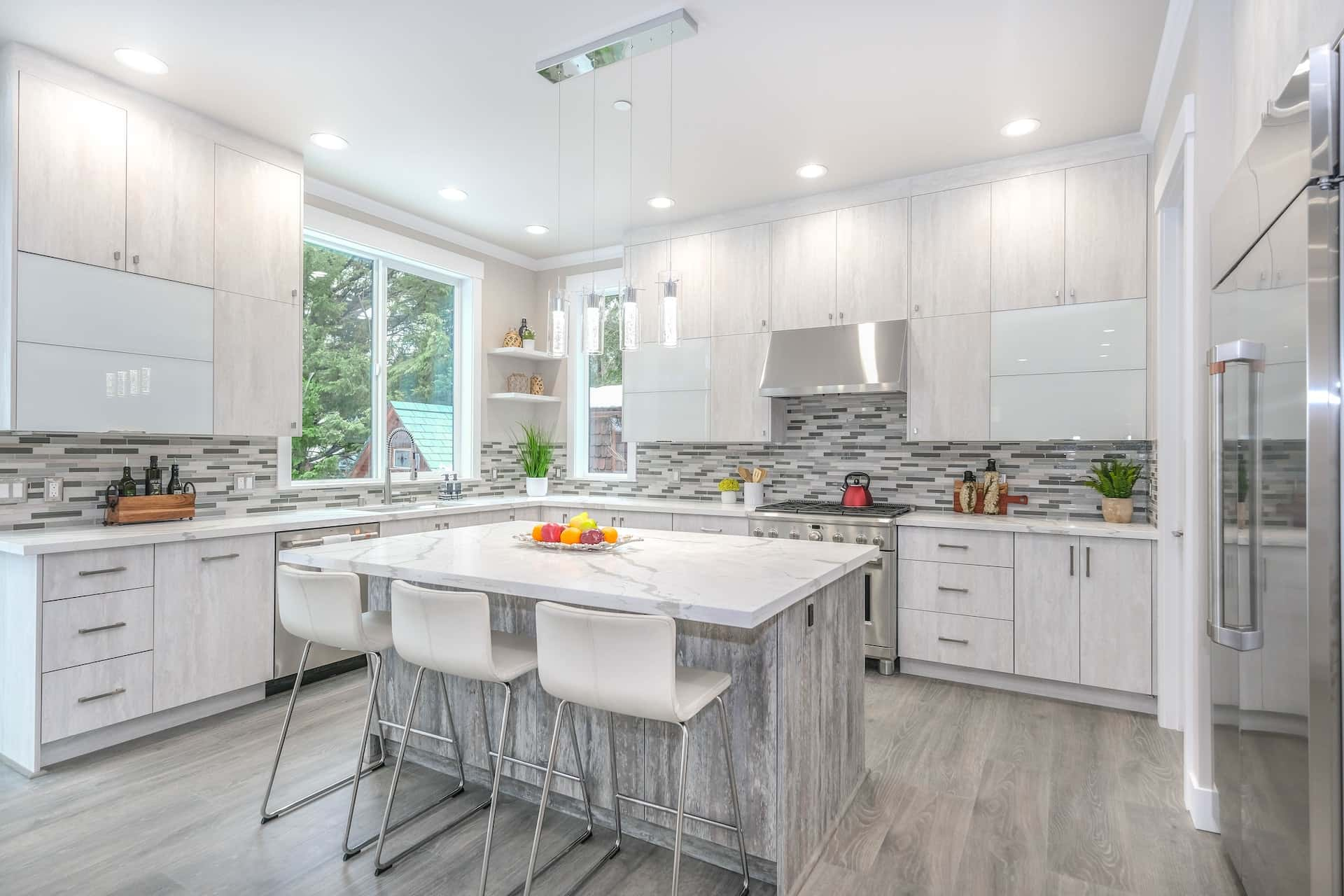
Kitchen islands come in many different sizes; however, most standard kitchen size islands are between 4 feet and 8 feet long, most importantly 2 feet wider than they are long.
When choosing an island size, it is important to leave enough clearance around it so people can move freely. While talking in terms of the standard kitchen size, the average clearance around a kitchen island is 42 inches.
Dimensions for Backsplashes
Backsplashes protect the walls from splatters while also adding style to your kitchen décor. They typically range in width from 4 inches to 6 inches, but their lengths can vary depending on how much coverage you want.
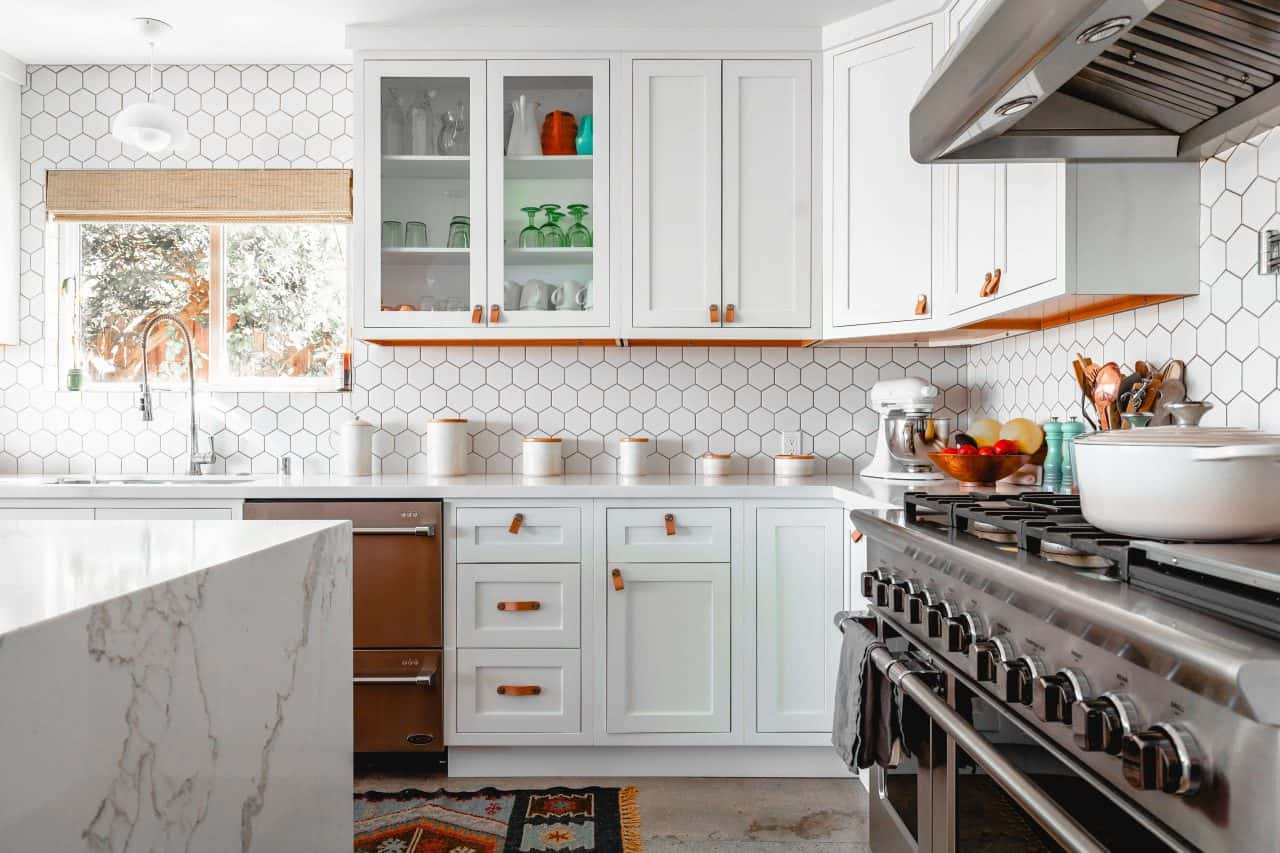
Most backsplashes range from 30 inches to 36 inches in length, but some extend up to 54 inches. If you have tall cabinetry, you may want a longer backsplash to help fill the empty spaces.
Dimensions for Kitchen Windows
Kitchen windows provide natural light, ventilation, and a view of the outdoors. They come in many different sizes, but the standard kitchen size window is 30 inches wide and 36 inches tall.
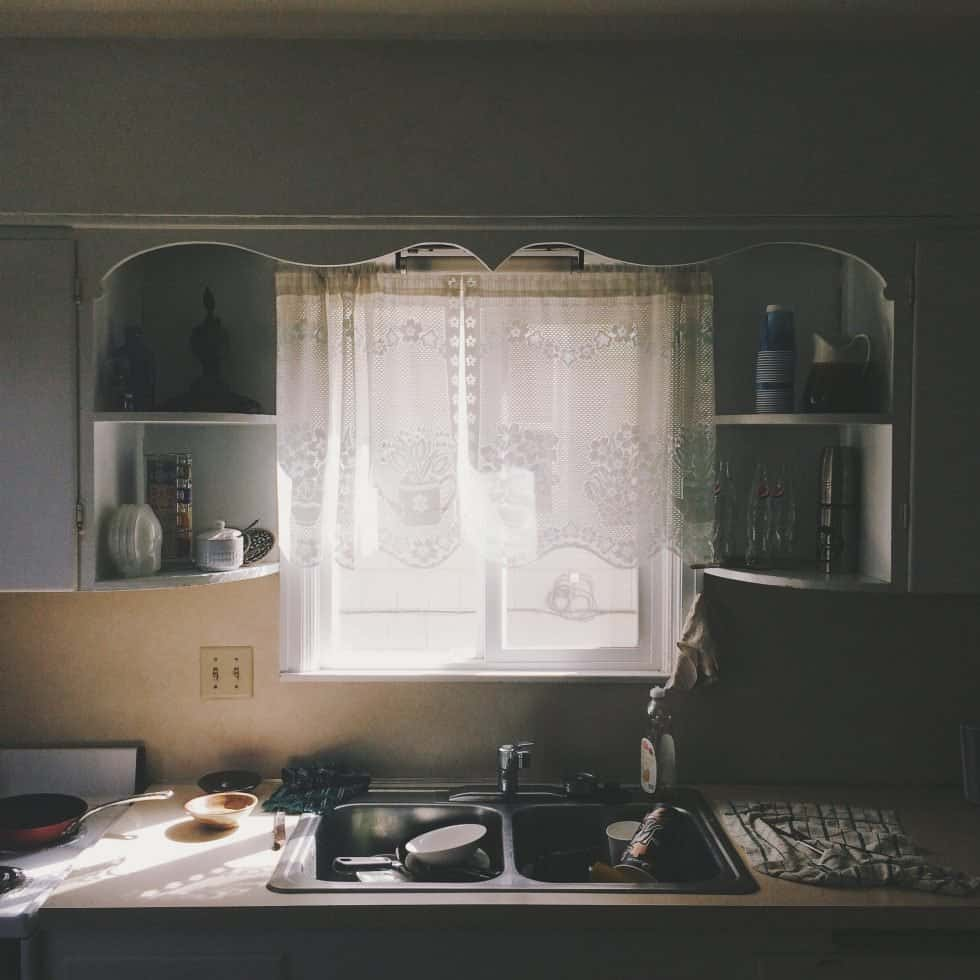
If you have a small kitchen, you may only have room for a single window. Larger kitchens may have space for multiple or oversized windows extending from floor to ceiling.
Dimensions for Breakfast Counter
A breakfast counter is a great addition to any kitchen design. It provides extra prep space, storage, and seating for enjoying quick meals or casual gatherings with family and friends.
Breakfast counters come in many sizes, but the standard kitchen size breakfast counter is between 4 and 8 feet long.
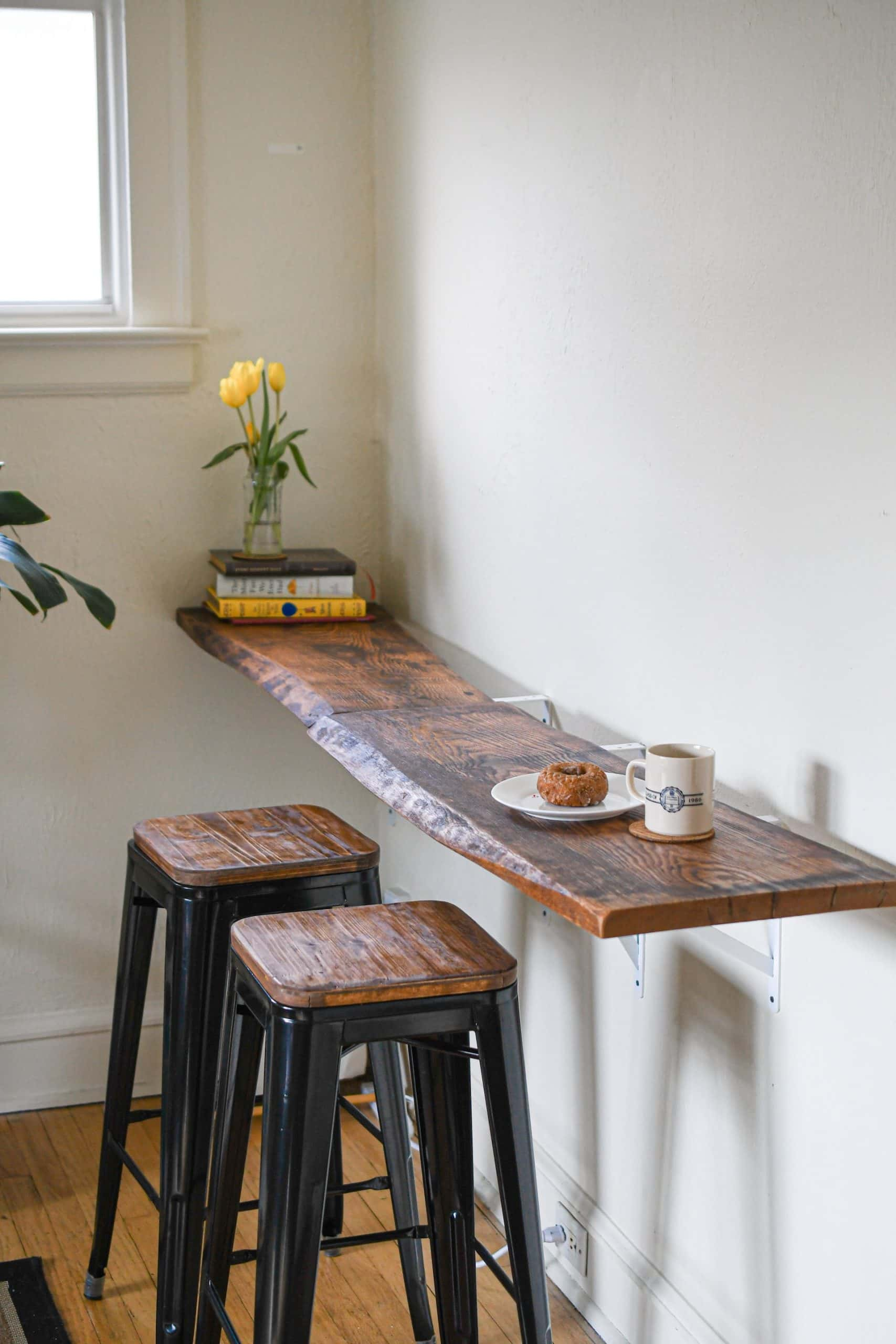
The counter height will vary depending on the stools or chairs used; however, most counters are between 34 inches and 36 inches tall.
When choosing a breakfast counter size, it is important to leave enough clearance around it so people can move freely. The average clearance around a breakfast counter is 42 inches.
Dimensions for Refrigerator
The size of your refrigerator should be based on the overall size of your kitchen and how much food storage you need. Most refrigerators are between 30 inches wide and 36 inches deep, but some models can be up to 48inches wide.
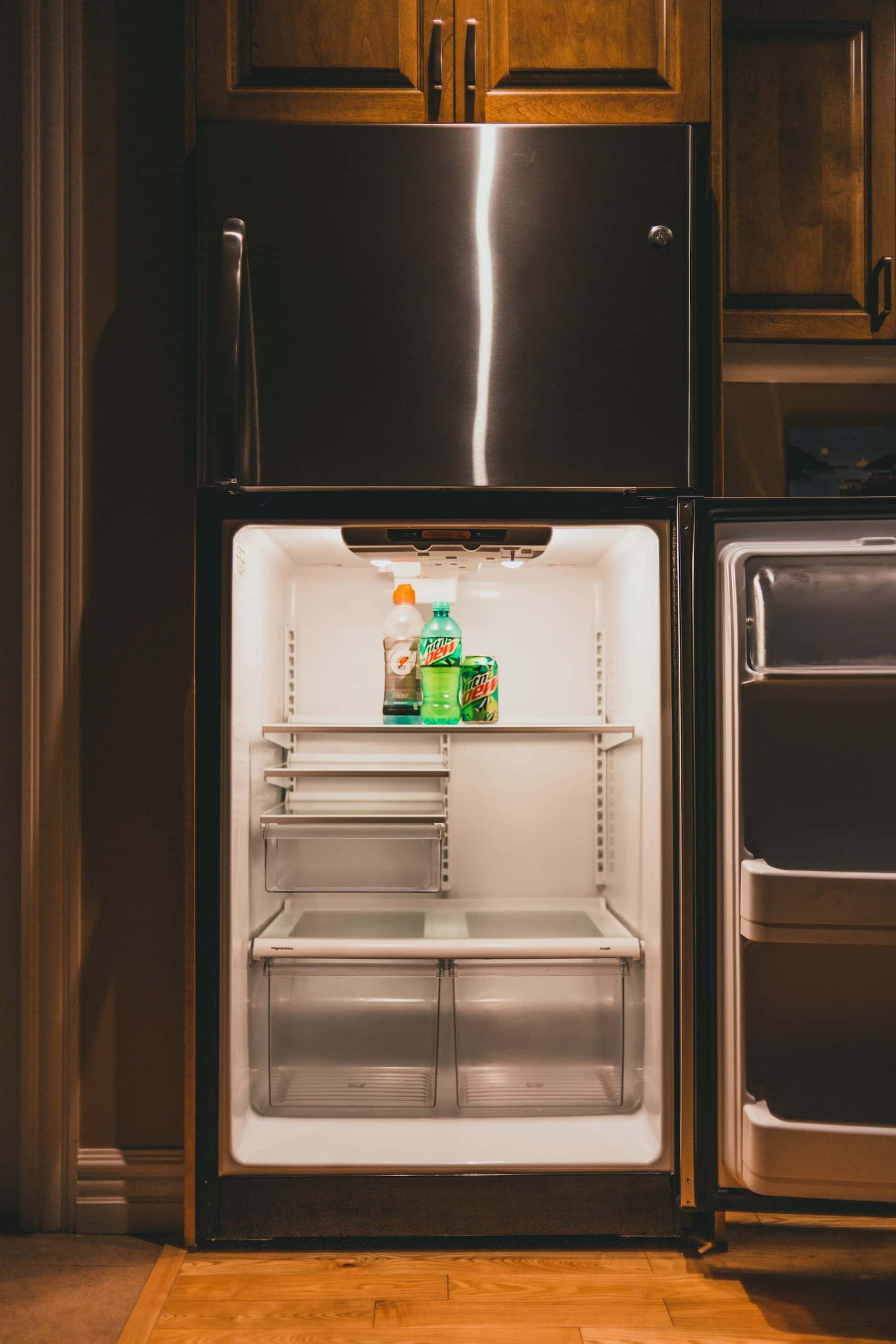
If you have a small kitchen, you may want a compact refrigerator less than 24 inches wide. Large families and those who entertain often may prefer an extra-large fridge that is more than 48 inches wide.
Kitchen Dimensions: Aisle Width
The width of the aisle is an important consideration in any kitchen design. This is the space between countertops, appliances, and cabinets.
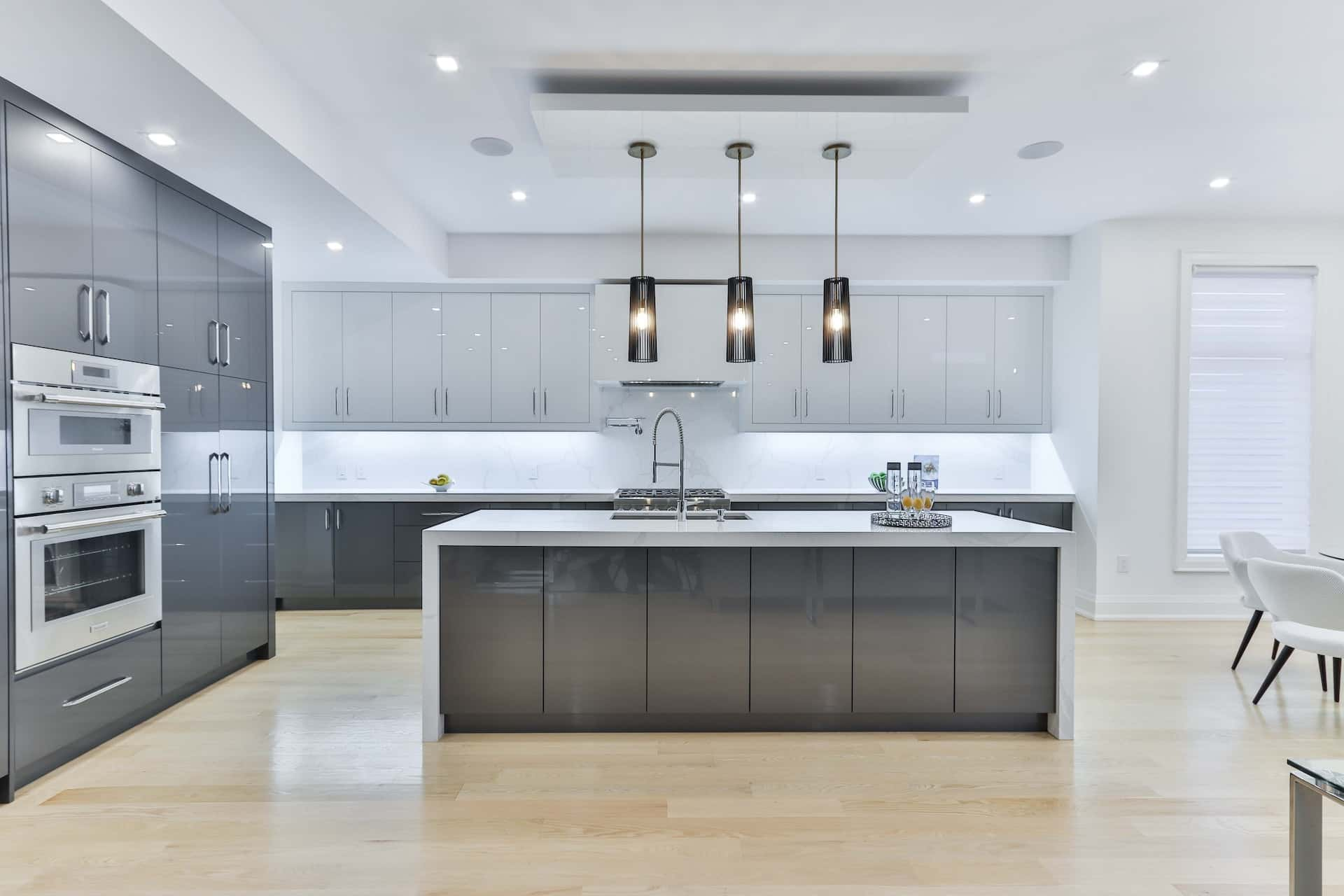
So, when we talk about the standard kitchen size, the aisle should be wide enough that it allows people to move around comfortably without feeling cramped. It should be 36 inches wide for a small kitchen and up to 48 inches wide for a larger kitchen.
Kitchen Dimensions: Microwave Height
Microwaves are often placed on countertops or built into cabinetry.
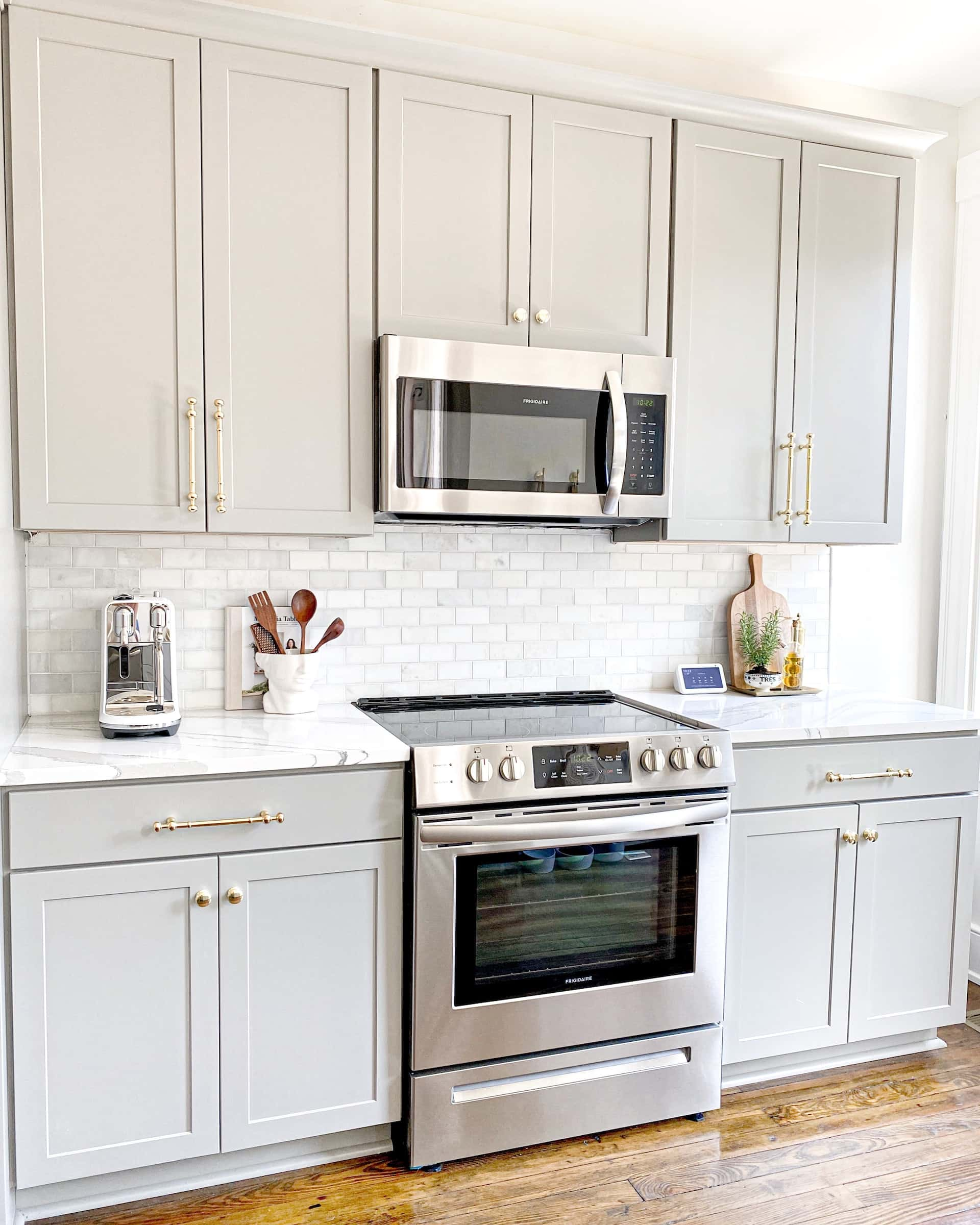
The height of the microwave should be comfortable for users to reach without having to stoop down or stretch up. Most microwaves are between 15 and 20 inches tall.
Kitchen Dimensions: Stove to Chimney Distance
The distance between the stove and the chimney is another important consideration in standard kitchen size and its design.
This space should be large enough to allow people to cook comfortably without being too close to the smoke and heat of the stove.
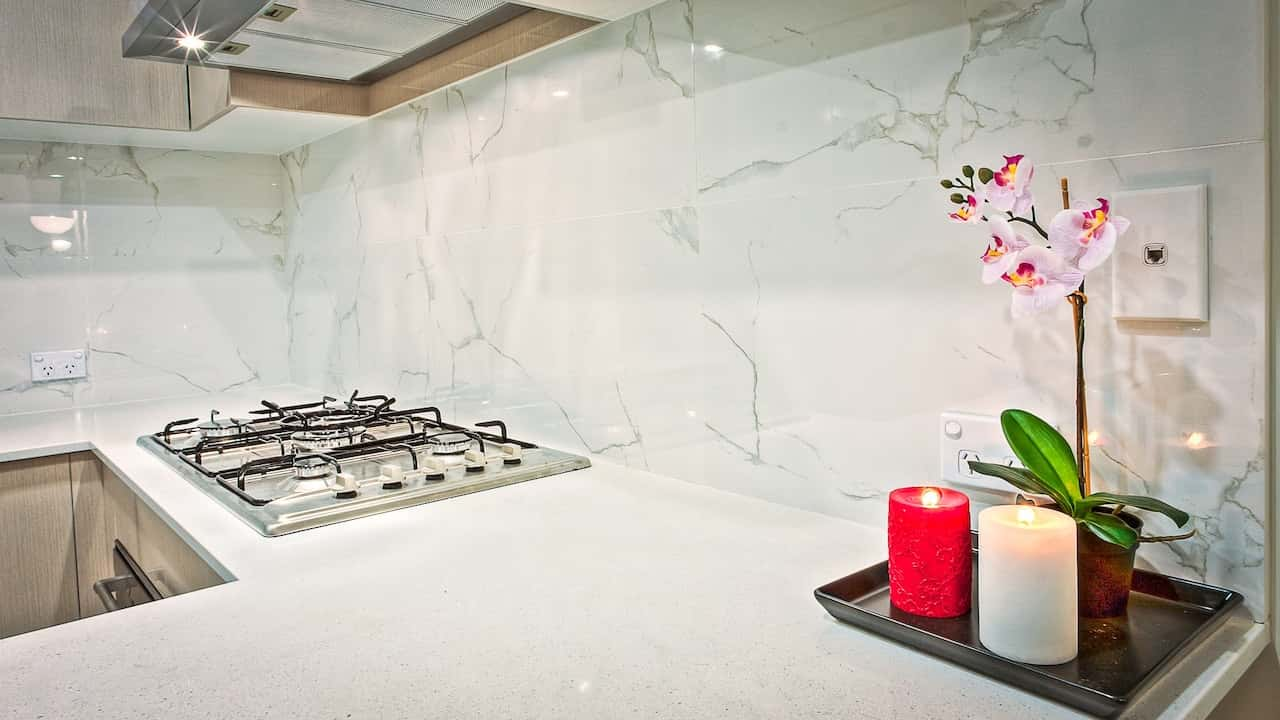
The distance between the stove and the chimney can vary a bit from the standard kitchen size, but it should typically be no less than 30 inches.
Open Kitchen Design
Open kitchens are becoming increasingly popular in both new construction homes and remodelling. That doesn’t mean that it cannot be designed as per the standard kitchen size.
An open kitchen design has fewer walls separating it from other rooms in the house, which creates a more spacious feel.
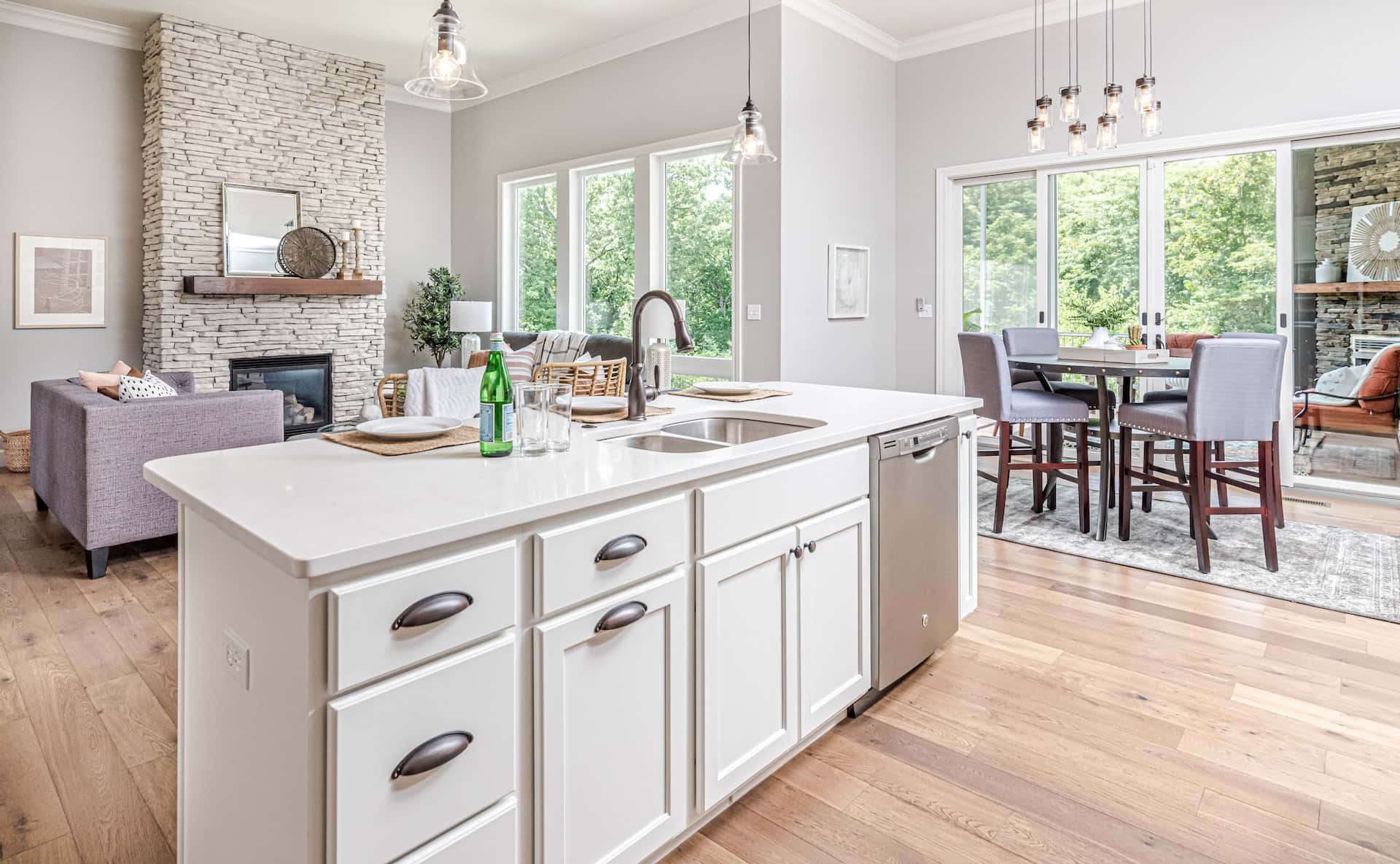
Open kitchens are typically more informal than closed kitchens, making them ideal for families who want a gathering place that is also functional for cooking and entertaining guests simultaneously.
When designing an open kitchen, it is important to maintain adequate traffic flow through the space while providing enough prep area and storage.
Functional Kitchen Layouts
While your kitchen layout is largely determined by the dimensions of your space, your lifestyle and preferences also play an important role in the design. If you’re planning a kitchen remodel, these four configurations are by far the most popular and can be tweaked to suit your needs.
Here are the pros and cons of each type of layout:
Galley Kitchen Ideas
A galley or parallel kitchen is a long and narrow layout with a walkway in between two parallel counters. Based on your room layout, you might have a window or door at the far end. Galley kitchens are highly functional and offer the maximum storage area ratio for any given square footage of space. There’s ample space for counters and cabinets, and the classic kitchen work triangle can be neatly incorporated into this layout.
Pros:
- Compact and efficient, perfect for small spaces.
- Promotes a streamlined workflow, keeping everything within easy reach.
- Can be budget-friendly due to its smaller footprint.
Cons:
- Limited workspace, making it challenging for multiple cooks to work simultaneously.
- Rarely includes a seating area, as there’s typically only a narrow corridor between workstations.
L-shaped Kitchen Ideas
By far the most popular kitchen layout, an L-shaped design features work counters and cabinets along two adjacent walls that meet at a corner. Extremely versatile and efficient, this layout can easily incorporate an island, a peninsular breakfast bar, or even a table. It’s possible to demarcate designated areas for different tasks – prepping, cooking, and cleaning; making this a great solution for small and large kitchens.
Pros:
- Provides ample counter space and storage, ideal for serious cooks and those who love to entertain.
- Offers a clear separation of work zones, promoting efficient workflow.
- Can be easily adapted to different sizes and shapes of kitchens.
Cons:
- May require more initial investment due to the increased use of countertops and cabinetry.
- The corner section can be slightly less accessible, requiring creative corner storage solutions like a Magic Corner or a carousel unit.
U-shaped Kitchen Ideas
Similar to a parallel plan but with a third counter connecting the end of the galley, a U-shaped kitchen is suitable for larger or mid-sized spaces. Three walls are lined with countertops and cabinets, creating a horseshoe-shaped layout. If space permits, an island or a table can be accommodated in the central space. This design maximises storage and counter space, allowing multiple cooks to work comfortably without feeling cramped.
Pros:
- Provides the most counter and storage space, ideal for passionate cooks and large families.
- Offers excellent workflow, with everything readily accessible from any point in the kitchen.
- Can be a great choice for open-concept living, creating a central and inviting space.
Cons:
- Requires a larger space compared to other layouts.
- Can end up being cluttered if not planned with care.
- The two corners will need special storage accessories like a Magic Corner or a carousel unit.
Open-Concept Kitchen Ideas
If you’re someone who loves a sense of connection and enjoys entertaining, the open-concept kitchen breaks down the barriers between cooking and living areas. This layout seamlessly integrates the kitchen into the living space, creating a more social and interactive cooking experience. However, the lack of walls comes with its own set of disadvantages, as there is no cooking privacy and you will be required to keep everything sparkling clean; something that’s quite hard for many of us!
Pros:
- Fosters a sense of connection and togetherness, ideal for entertaining and family gatherings.
- Creates a more spacious and airy feel, especially in smaller homes.
- Allows for easy supervision of children while cooking.
Cons:
- Cooking odours and noise can easily travel throughout the living area.
- Requires careful planning to ensure a cohesive design between the kitchen and living space.
- May not be ideal for those who prefer a more secluded cooking environment.
Conclusion
There are several factors to consider when choosing the size of your kitchen. Of course, we have the standard kitchen size that we can follow.
However, the most important factor is the amount of space you have available and how it can be moulded around the standard kitchen size.
Other important factors include the number of people using the kitchen, the types of activities that will take place in the kitchen, and the appliances and storage needs.
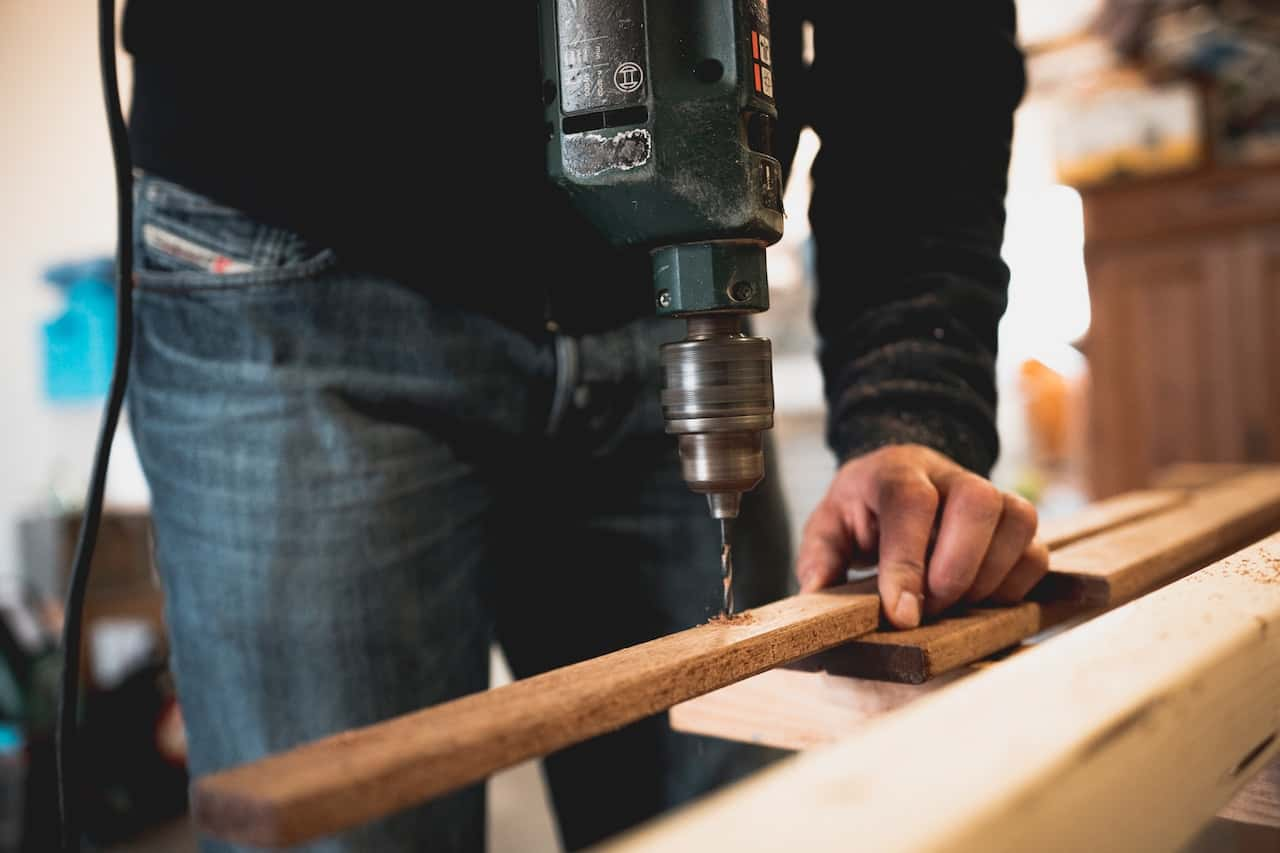
With careful planning and consideration, you can create a functional and beautiful kitchen that meets all of your needs.
If all of these details boggle you, you can also get this done from professionals like Homelane, who have a great deal of experience with kitchen interior design.
FAQs
1. What is the standard kitchen size in India?
The standard kitchen size will vary depending on the preferences of the people who use it. The standard kitchen size is 8 feet wide and 10 feet long. A good rule is to allow at least 36 inches of countertop space per person who regularly uses the kitchen. This would mean a minimum standard kitchen size of 144 square feet for a family of four. Kitchen countertops typically range in height from 32 to 35 inches in India.
2. What Is a Size of a Medium Size Kitchen?
For some, a medium-sized kitchen might be 200 square feet or larger, while for others, it might be closer to 100 square feet. It depends on the individual’s needs and wants.
But the standard kitchen size in India is about 8 feet x 10 feet which considers space for two people to move around and carry out their kitchen duties easily. Here we consider the clear distance to be 6 feet and the platform width to be 2 feet.
3. What Size Is a Normal Kitchen in a Tiny House?
There is no such thing as an average or “normal” sized kitchen in a tiny house since every home varies in its layout and design.
Tough, we can fall back on the minimum standard kitchen size, which can be about 5 feet x 7 feet considering the two essentials of any kitchen, the platform, which could be 2 feet and the clear distance for the ease of movement, which is about 3 feet.
Still, tiny houses have less than 100 square feet of kitchens. This smaller footprint can make designing and utilising the space more challenging, but it is possible to create a functional but stylish small kitchen with thoughtful planning.
Popular Services
Modular Kitchen Designs | Home Interior Designs | Wardrobe Designs | Living Room Designs | Bathroom Designs | Space Saving Furniture | Home Office Designs | Pooja Room designs | Foyer Interior Design | Kids Bedroom Design | Interior Lighting Design |False Ceiling | Home Wallpaper | Furniture Design
Popular Locations
Modular Kitchen In Ahmedabad | Modular Kitchen In Mumbai | Wardrobe Designs In Chennai | Wardrobe Designs In Delhi| Interior Design In Mumbai | Interior Design In Delhi
Popular Blogs
Party Ideas for Holi | Assam Type House Design | Pop Designs for Bedroom | Window Grill Design | Plinth Area | MDF Vs Particle Board | Wall Colour Combinations | Vastu Shastra Colors For Living Room | Classical Interior Design | Wardrobe Dimensions | Parapet Design | How To Prevent Dust In Room | Types Of Kitchen | Wall Panel Design | Small Modular Kitchen | Pooja Room Design| HDF Wood | French Door Design | Bedroom Wardrobe | Solid Wood Vs Engineered Wood | Athangudi Tiles




